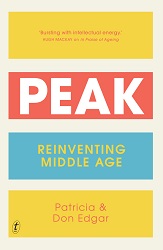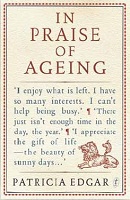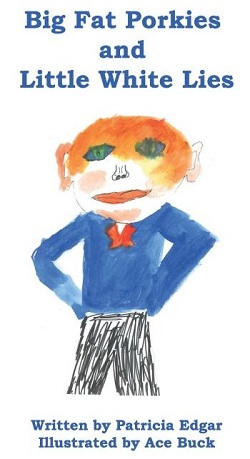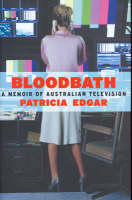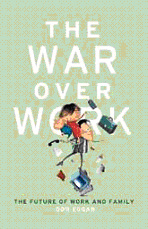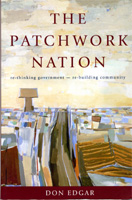Media: Violence and Utopia
4TH WORLD SUMMIT ON MEDIA FOR CHILDREN AND ADOLESCENTS
RIO de JANIERO—BRAZIL, 19TH-23RD APRIL 2004
Dr. Patricia Edgar
As today's keynote speaker, I stand before you in place of a very famous man - Nelson Mandela. So I have much to live up to.
I have been asked to speak about values.
How we form values is a very complex philosophical issue. Our local Melbourne paper carries regularly what they call an 'Odd Spot', where they report on strange incidents around the world. Recently, this one caught my eye.
Fifteen armed robbers raided a monastery in Brazil, stole about $8000, then made a priest swear on a Bible that there was no more money on the premises. They asked forgiveness before leaving.
What a mix of values there! They stole, they recognized their sin, and they did not hesitate to make use of the Priest's vulnerability for their own ends.
I am not speaking today of such expedient values, but of a cohesive philosophy for an utopian society, a visionary system which gives all its citizens a place and a purpose. How do we strive for such a society? And how do the media impact on the formation of such values for children?
The media model that dominates the world is Western, and predominantly American.
The values represented by the dominant Western media and most of the programs made, are largely irrelevant to the needs of most children in the world today.
The reasons are obvious. The President of the World Bank, James Wolfensohn, spoke recently about the fundamental cause of conflict, terror and disequilibrium in the world, as poverty.(1)
Five out of six people live in the developing world yet we are spending $1,000 billion a year on military expenditure and only $50 billion on development. We are spending $300 billion in agricultural subsidies, while people starve. Our world has half its people, out of 6 billion, living on less than $2 a day, and about 1.2 billion living on less than $1 a day.
Half the world's population is under 24 years of age. A quarter - 1.5 billion - is under 14 years of age.
An ideal global society must deal with this imbalance. And nation states must also deal with this imbalance within their own borders.
If young people are to grow up to be constructive rather than destructive, they have to have hope and opportunity. They must be offered something to live for, to believe in, to value. And Western media with its pressure to buy, buy, and buy, its violence and sensationalism, cannot claim to do that.
We now know the importance of a child's early years. If children are not given the stimulation and support they need in those early years, they will grow up to become marginalized adults. Their health, nutrition, literacy, numeracy, social and physical skills, are all important. But just as crucial is the development of their emotional and moral intelligences for their social well-being. Children require healthy bodies, educated minds, and social values. The importance of early development IS as a predictor of everything that follows. And for children to develop a sense of social purpose, that is crucial for their well-being, they need to understand who they are, they need to know their cultural roots through hearing and seeing their own stories.
They need to belong --to a family, a community, a country, a culture and then, and only then, they can know their own identity and their place within a global community.
Belonging verifies a set of values and beliefs. The give and take of living in a family and a community must be learned at an early age. Such learning comes from example—nothing will surpass lessons from experience—but also from story-telling. And this is where we come in.
The Western media model will not and cannot answer this need for most children today. There is a crisis of meaning in the West. Decent core values are hard to find within our institutions. So we cannot buy the bulk of our the programs in, from outside, that we need for our children. We have to make our own. This is true for all producers who aspire to do our best for the young and who are driven by ideals rather than commercial success.
In making our own programs what can we learn from what has already been created?
First Western media content is violent and second, it is market driven. But the impact or meaning of these characteristics is not necessarily obvious.
The single question that has most pre-occupied researchers in relation to children and the media is, 'What is the impact of media violence on children?” The lobbyists have used as their main justification for the production of programs for children the desire to protect them from the violence depicted elsewhere.
Yet despite the multi-millions of dollars expended on research on the subject of media violence, the findings are spurious.
Two large studies in the early 1960s, one in the US by Wilbur Schramm and his colleagues, and one by Hilde Himmelweit in the UK, concluded:
“For some children, under some conditions, some television is harmful. For other children under the same conditions, or for the same children under other conditions, it may be beneficial. For most children, under most conditions, most television is probably neither particularly harmful nor particularly beneficial.”(2)
Effects studies continued in the US and became a self-perpetuating industry for three decades. Clear answers were not found, because the wrong questions were being asked. Researchers focused narrowly on the trivial, counting acts of violence, and missing the bigger issues.
Some British researchers, notably David Buckingham, (3) in the UK pointed out that effects studies were missing the social and narrative context. Researchers judged cartoons as excessively violent, when children understood the animation genre and the conventions of other genres. Children were not passive observers of violence and a researcher cannot assume the experience is negative simply by analyzing the content.
The context of the violence is what makes it acceptable or unacceptable, and the depiction of violence in drama is essential for children to understand the world in which they are growing up.
The answers are not clear. Yet the belief that media violence is harmful does not go away.
The factors that have been identified as risk factors for children who are in trouble - are child abuse, family breakdown, unemployment and poverty, isolation, lack of social success, peer group pressure. The media are not high on the list of influences when other risk factors are absent. But trying to isolate the impact of media alone misses the bigger issue.
While media violence may not be a major factor in explaining individual acts of violence, it may however, be a very important factor at the societal level. The media depict a very violent world, and the media exploit that violence in news programs as well as in sport and fictional drama. In the society we see on television there are high levels of aggression, and there is wide acceptance of anti-social behaviour. There is a heightened sense of threat and insecurity. As a result of viewing this type of programming, day after day, people (viewers) perceive the world to be a much more dangerous place than it actually is and fear they will be the victims of violence. This is particularly true for the vulnerable - those living alone, women and older people. As well, perpetrators learn that aggressive attitudes and behaviors are often acceptable.
Media content has changed its form in the past few decades. Morality tales are now rare. Remember when the hero drew his gun only when he was provoked, and always in the service of good? (4). Increasingly the models of behaviour in films, television, video games and music are anti-social. Gangsters, drug dealers and psychopaths are often glamorized.
Right and wrong are no longer clear concepts. This extends way beyond fictional programming. Witness the war in Iraq and the debate that surrounds it. We don't believe our politicians any more. And the examination of their manipulation of facts becomes part of the media environment. Altogether this media world presents an experience where the values depicted are at best ambiguous and confusing. And our young see this.
Further evidence of the impact of the environment on social context for criminal behaviour comes from the epidemic theory of crime which Malcolm Gladwell describes in his book The Tipping Point. (5 ) He says that crime is contagious. It can start with a broken window and spread to an entire community. The tipping point is not a person, but something physical, like graffiti. In the 1980s, New York City was regarded as one of the most violent cities in the US. In the early 90s crime declined significantly, and declined more than in any other city in the US. Muggers and robbers were not operating as they had been. Why?
The New York subway was covered in graffiti and regarded as highly unsafe in the 1980s. A new subway director was appointed, who decided to clean up the system, line by line and train by train. The graffiti clean-up took 6 years. Next, they cracked down on fare beating - cheating the system. Plain clothes police manned the turnstiles and would nab fare beaters and handcuff them into a daisy chain, and leave them standing there to signal the crackdown to everyone else. Anyone arrested for fare beating who was carrying a weapon came in for other charges. Soon the travelers started leaving their weapons at home.
Police stepped up the enforcement of laws against public drunkenness and public urination, and arrested those involved in minor damage on the street, like throwing empty bottles.
Minor, seemingly insignificant, quality-of-life crimes, were tipping points for violent crimes. By tinkering with the smallest details of the subway, the epidemic of violence related to traveling in New York was reversed.
What this theory suggests is that the urban criminal - far from being someone who acts for fundamental, intrinsic reasons and who lives in his own world - is actually someone who is alert to all kinds of cues, and who is prompted to commit crimes based on his perception of the world around him.
Behaviour, it is argued, is a function of social context. And no issue is too small to have an effect. Cleaning up the street can have more important consequences than one might think. If we apply such thinking to the media environment, we can see we have a long way to go. We need to clean up our programming, the way we present news, sport, lifestyle and fiction programmes and the advertising that blends them all together, if we aspire to changing social values and to living in civilized communities.
Many in the West are questioning the individualism, materialism and consumerism that dominate our way of life and the media which play an integral role in selling and endorsing these values.
Some researchers have argued that, as with the violence debate, concerns about consumerism and advertising to children are conservative, paternalistic and neglect the diverse and complex ways in which children use and relate to cultural commodities. (6)
Again, I believe such views miss the bigger issues.
Marshall McLuhan (7) got it right when he said, 35 years ago, “The medium is the message.” In essence, he argued that society is shaped more by the nature of the media by which men communicate than by the content of the communication.
Just as the machine altered the nature of work, the car extended cities, created suburbs, changed our lifestyle, altered breeding patterns, introduced shopping malls, advertising hoardings, and drive-in theatres. The history of the car is a history of unintended consequences. (8)
So too is the history of media. Television transformed the home, and life within it. An alliance between the consumer and the manufacturer began, through advertising direct into every home. Innovations in selling through buying on credit, packaging entertainment and advertising, all played a part in turning every home into a unit of consumption. Consumer culture re-defined youth, transforming it from a time of growth, and transition to work and family responsibilities, to a time of membership in a distinct consumption community. (9).
Children as young as two are now consumers, dictating to parents their demands, and merchandising aimed at children is worth billions of dollars. The figure for sales of Barbie Dolls alone - the top-selling toy brand in the world - is reported at US$3.6 billion in 2003 (10).
Consumerism has led to a quest for meaning through possessions, and to people working more than they want, doing jobs they don't like. The market focuses on individual wants, at the expense of public services, environmental protection and community centres. ( 11)
It is argued that consumer culture has given meaning and satisfaction to contemporary affluent society in diverse ways, and has been part of a unique formula for economic growth. But the down side is becoming more and more apparent.
The environmental impact alone of a global consumer American standard is a frightening prospect. As China craves its hamburgers, the jungles, the lungs of the earth, are being destroyed for beef grazing land.
Any society that subordinates every value to the market, divides those who can buy from those who cannot, undermining social cohesion. Inequality is increasing in the wealthy countries and around the globe.
As well, there is evidence that many Americans and certainly Australians and other Westerners, are realizing that consumption and the emphasis on individualism which undermines community, is creating a greater sense of unhappiness and alienation. People are asking why, when we have never been so well off, are we not fulfilled?
Abundance, too much of a good thing, comes at a cost. If we look, as an example, at the food industry, one of the biggest advertisers of products to children on television, this point is beyond dispute. In the US, excess fat claims 300,000 lives each year. The Atlantic Monthly recently reported that the number of overweight people on the planet - more than 1 billion - exceeds the number of malnourished. More than half of all adult Americans are overweight, and a quarter are obese.
And how did this happen? 12
It began in the 1970s. Nixon's government liberated the farmers from government regulation. Farmers ploughed from fencerow to fencerow. By the mid-70s, corn production soared to an all-time high. So did farm income.
Food scientists in 1971 found a way to produce a cheap sweetener from corn syrup. It was six times sweeter than sugar, and it kept the product fresh-tasting, giving it a longer shelf life. Products looked more natural. At the same time, palm oil, a highly saturated fat, became a substitute for other fats, for the same reasons. It was cheaper, it lasted forever on the supermarket shelves.
Having brought the price down, and the calories up, the marketing guys got to work and discovered that people generally would not buy two servings of French fries or two burgers, but they would buy the super size, the value-added meal. Super-sizing led to a revolution in eating. By 1996, 25 per cent of the $97 billion spent on fast food came from larger-size portions. A serving of McDonald's French fries ballooned from 200 calories in 1960 to the present 610 calories. What was once a 590 calorie McDonald's meal was now 1550 calories. By 1999 heavy users - people who eat fast food more than 20 times a month - accounted for $66 billion of the $110 billion spent on fast food. (13)
The shift of women into the workforce meant that by 1994 American families ate 34% of their food away from home.
Add to that the fact that physical education programs were cut from school curricula because of cost, and the school canteens (which had responsibility for providing balanced meals) were being outsourced to fast food franchises.
The fast food outlets targeted poorer areas where the families are larger, and then targeted “tweens” or pre-teens. They began a youth advertising campaign. New ad agencies were formed simply to handle the Saturday morning slot and target kids specifically. Advertisements for food were more than one-third of the ads. placed in the Saturday slot.
So we saw campaigns like the Happy Meal formula, McDonalds' parties for kids, Pizza Hut changing its long-time jingle “Pizza Hut and nothing more”. To “More Rock 'n' Roll, more fun”. Free toys and cartoon characters were used to market Burger King, Mars, Cadbury, Nestle, Coca Cola, Pepsi - and they all went giant size.
Now in 2004, about 25 per cent of Americans under 19 years are overweight or obese. That number has doubled in 20 years. These young people will battle illness for most of their lives - Type 2 diabetes, bone disease, respiratory and cardio-vascular diseases.
Advertising to children does not appear so benign in this context.
Advertising has carried the message that it is a comfortable world, eating is fun; it's healthy to be fat; bigger is better.
Slowly we have woken up and fast food advertising to children is on the agenda. The medical profession in America and in Australia is sounding the alarm; not the U.S. FFC - the Federal Communication Commission, or the FTC - the Federal Trade Commission. Those two regulatory agencies say nothing and do nothing.
The same is true in Australia.
Yet when Janet Jackson bared her right breast on television, for a few seconds at the NFL Super Bowl early this year, the FFC in the U.S. began an immediate investigation into the incident, because of the people's outrage. Then, of course, the press printed the picture and television repeated the incident as 'news' many times over. Such is our media environment.
It's a bit like the Odd Spot about the robbers and the priest I mentioned earlier. Double standards permeate our culture.
But McDonald's is finally getting the message. In Australia, in what the fast food giant claims as a world first, labels detailing the fat, sugar, salt and energy content of standard items such as the Big Mac will be introduced across the Australian menu before the end of the year. And the chain will eliminate super-size French fries and soft drinks from its American menus by the end of the year. (14) The super-size soft drink in the US is 1.2 litres.
The issues that need to be considered are not: Do children and young people understand the difference between advertising and programming? Or, Are advertisements assisting them to become more educated consumers? Or, Are children more vulnerable to advertising than adults?
We need to step back, as McLuhan did, and ask ourselves the big questions.
Is the media model coming out of the US, and being emulated around the world, desirable or appropriate - not only for your children, but for society as a whole?
I don't believe so.
Is the Western model of consumerism sustainable for us all in the long term? Clearly it is not.
Can 6 per cent of the world's population effectively impose its will, its values - its media power and technological superiority - on the other 94% of mankind?
Not for long.
So what are the values we should be attempting to convey to our young people?
During my childhood, where I grew up in an isolated rural community, the outside world did not impinge much at all. I grew up in a close network of family and community relationships that defined my world - my values, my beliefs and my identity. I knew little about what lay outside that world. Today, we are all irrevocably involved with and responsible for one another, and television and technological advances in communication have brought this about. At the same time the networks of family and community have broken down. We have to work on all fronts if we are to reverse the social breakdown.
In Brazil, you are engaged in a great social experiment. What happens in Brazil could be a model for the developing world. Roughly the size of the USA, you have been a colonized and violent nation, and one of the most unequal societies on earth. After two decades of economic stagnation and corruption, you have elected a leader in President Lula who plans to redistribute wealth and power and get the regional economy growing again.
Brazil, he says, “wants to find its own way.” (15) He will have to fight powerful interests to achieve his vision for Brazil. But his life and his tenacity is a model for Brazilian and Latin Americans, and for us all.
It may well be that we will never create a perfect social order, and that some of the problems of our age may be insoluble.
But most of us are here because we want to try and make a difference. And so we have to work on changing the world as we know it today.
As the anthropologist Margaret Mead once said, “A small group of thoughtful, concerned citizens can change the world. Indeed that is the only thing that ever has.”
Young people must be taught what matters in life. Without values, they have no meaning or purpose in their lives, no sense of belonging, no sense of hope.
We are social beings. The pursuit of individual choice and personal satisfaction over the collective good will ultimately bring about our undoing. And television can be a wonderful medium to inspire and inform. I have spoken about the excesses but there are many here today who have created wonderful examples of the kind of programming that fits with desirable social goals. This Summit is all about making a difference, changing directions, or making a start.
In March, 1995, Nelson Mandela, then President of South Africa, sent a message to the First World Summit in Melbourne. In part, he said:
The future of our planet lies in children's hands. All of you involved in television, which is one of the most powerful influences on children, have an awesome responsibility on your shoulders.
At a time when it appears that the moral and the cultural fabric of our society… is disintegrating, it is ever more important that we instill in our youth and children a strong sense of values, a compassion and understanding of one another's culture and humanity, and offer them knowledge about the world.
In this light, we must broadcast to our children across the nations the best the world has to offer and not consider them merely as a consumer market. The opening up of airwaves and the erosion of borders must not be seen merely as an opportunity for the developed world to reach new markets. It should create new vistas for two-way communication between producers and viewers. The vast majority of the world's children are found in developing countries, and their voices and stories must be heard too.
Exposure to differing world views and experiences can only lead to greater understanding and harmony among nations. If our children are nurtured in this kind of environment, then we will have paved the way for them to build a more peaceful, and prosperous world, rather than one torn asunder by greed and lust for power.”
Nelson Mandela said in 1995, concisely and eloquently, what remains a most important message today.
Thank you.
References:
- The 7.30 Report, ABC. 10/2/2004, Interview with James Wolfensohn by Kerry O'Brien
- Patricia Edgar (1977), Children and Screen Violence, University of Queensland Press, p. 26-7
- David Buckingham (2000), After the Death of Childhood, Polity Press, p. 130
- David Denby, 'Teen Movies', The New Yorker, 31 May, 1999
- Malcolm Gladwell (2000), The Tipping Point, Abacus, pp. 138-151
- David Buckingham, op. cit., p. 166
- Marshall McLuhan (1964), Understanding Media, Sphere Books Ltd.
Marshall McLuhan & Quentin Fiore (1967) The Medium is the Massage Penguin Books
- Graeme Davidson (2004), Car Wars: How the car won our hearts and conquered our cities, Allen & Unwin
- Gary Cross (2000), An All-Consuming Century, Columbia University Press
- Lauren Weber, 'Barbie and Ken Split After 43 Years', The Age, 14/2/04
- Richard Eckersley (2004), Well and Good, Text Publishing, p. 134
- Greg Critser (2003), Fat Land. How Americans Came to be the Fattest People in the World, Allen Lane
- Ibid, p. 28
- Deborah Cohen, 'Would you like smaller fries with that drink?', The Age, 5/3/04 ; Stephen Dabkowski, 'McFeast your eyes on this: nutritional labelling',The Age, 31/3/04
- Sue Branford & Barnardo Kucinski, 'Politics transformed; Lula and the Workers' Party', 2003



